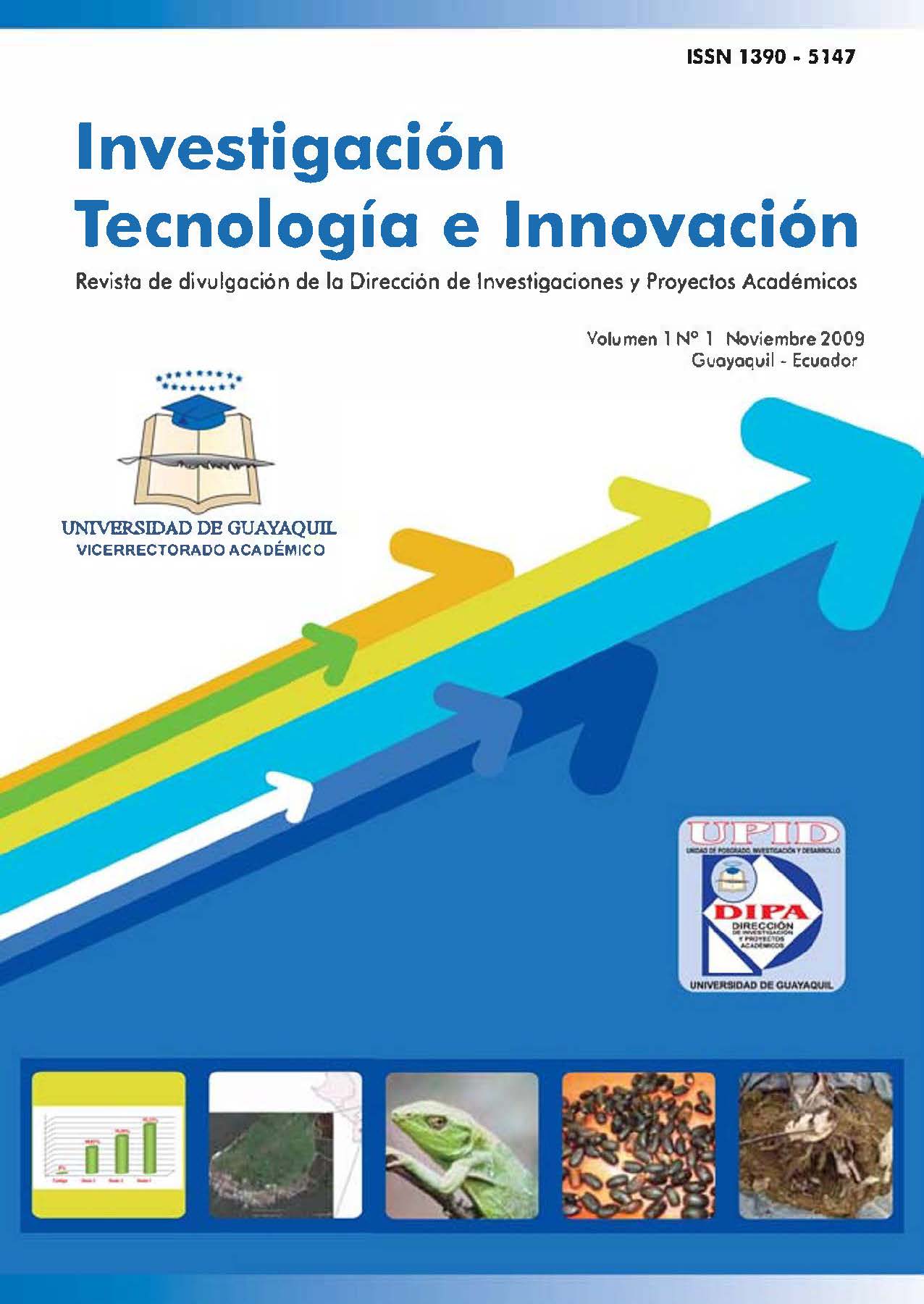Heavy metal contamination and impact on benthic organisms in "Cerrito de los Morreños", Gulf of Guayaquil, Ecuador.
DOI:
https://doi.org/10.53591/iti.v1i1.31Keywords:
environmental contamination, heavy metals, permissible limits, water qualityAbstract
In this work, an evaluation of the levels of heavy metal contamination in the environment of the community "Cerrito de los Morreños", Puná canton, Guayas province is carried out. Thirty surface water samples, 32 sediment samples and 50 samples of organisms (Donax sp.) were collected. The physical parameters were taken in situ. The quantification of heavy metals in water, sediment and organisms was determined using an atomic absorption spectrophotometer.The physical parameters: temperature, salinity and pH, were kept constant. Dissolved oxygen varied according to the tides and, at low tide or low tide, low values were recorded, although they are not considered anoxic. Nutrients showed stable averages. As for the quantification of heavy metals in water, cadmium, copper and nickel were found in low concentrations. In sediments, cadmium, copper, lead, nickel and zinc were present in small concentrations, because they are part of the environment due to the different natural cycles. The presence of lead was not detected in organisms (Donax sp.), but cadmium (3,246 ppm), copper (13,242 ppm), nickel (5,506 ppm) and zinc (47,127 ppm) was detected.The presence of lead in the water samples exceeded the permissible limits according to the water quality criteria of the Unified Text of Environmental Legislation (TU LAS); the other metals were below the acceptable range.
References
Apte, S., Gadner, M., Gunn, A., Ravenserof, J., Vale., J. (1990 ) Trace metals in the sevem estuary: A reppraisal. Mar . Poli. Bull., 21 (8 ) 393-396 pp.
Bravo, M. & Cobos, F. (2000): Plan de ManejoGlobal de3 394 Ha de manglar para beneficio de laComunidadCerrito de los Morreños. PATRA-Subsecretaría de Desarrollo Sostenible.
Gaad, G. & Griffiths, A. (1987). Microorganisms and heavy metals toxicity. Microbial Ecol., 4: 303-317.
Greenber A., Clesceri, L., Eaton, A., ( 1992). Standard Methods, 18 Edition APHA- AHWA- USA, 3060 pp.
Ke C. and W-X Wang, (2002). Trace ingestion and assimilation by the green mussel Perna viridis in a phytoplankton and sediment mixture. Mar. Biol., 140: 327-335.
Largrewerff, J.V. (1972) lnteractions ofzinc with uptake and trans location of cadmium in radish. New Phytologys, 515-522 pp.
Martín, J., Guan, D., Elbaz - Poulichet, F., Thomasy, A., Gordev, V., (1993), Preliminary assessment ofthe distribution of sorne trace elements in a pristine aquatic environment in the Lena river estuary (Russia). Mar. Chem., 43:185- 199 pp.
Moreno M. (2003): Toxicología Ambiental " Eva lu ació n de riesgo para la salud humana", McG raw-H ill/lnteramer ic ana de España.
Páez-Ozuna J., Frias-Espericueta, M. y Osura-López, J. (1995). Trace metal concentrations in relation to season and gonadal maturation in the oyster Crassostrea iridescens. Mar. Environ. Res., 40(1): 19-31.
Phillips D. ( 1976): The common mussel Mytilus edulis asan indicator oftrace metals in Scandinavian waters. l. Zinc and cadmium. Mar. Biol., 43(4): 283- 291.
Phillips, D. & Rainbow, P., (1997). Trace metal accumulation in marine invertebrates: Marine biology or marine chemistry. J. Mar. Biol. Assoc., 77:195-2!0.
Rainbow, P.; Phillips, D. y Depledge, M. (1990). The significance oftrace metal concentrations in marine invertebrales: A need for laboratory investigation of accumulation strategies. Mar. Pollut. Bull., 12(7): 321-324.
Rajkumar W.; Mungal, R. y Bahadoorsingh, E. (1992): Heavy metal concentration in sea water, sediment, and biota (Donax striatus) along the east coast ofTrinidad. Caribb. Mar. Stud., 3:26-32.
Sadiq M. (1992). Toxic Metal Chemistry in Marine Environments. Marce!
Dekker. New York, 390 pp.
Sharp, J., Culberson Ch., Church, T., (1982). The Chemistry ofthe Delawere estuary. General considerations. Limnol. Oceanogr. 27(6): 1O15-1028 pp.
Standard Methods (2005) for the Examination of water and wastewater 21 si. Edition Ed. Jointly Board.
Solórzano L. (1983). Boletín Científico y Técnico Vol. Vil, No. "Instrumentación y Análisis Químico de Agentes Contaminantes en el Mar", Instituto Nacional de Pesca, Ecuador.
IS.Texto Unificado de Legislación Ambiental (2003). Libro VI Anexo !-Norma de Calidad Ambiental y de Descarga de Efluentes: Recurso Agua.
Usero J., González-Regalado, E. y García, l. (1996). Trace metals in the bivalve molllusc Chame/ea gallina from the Atlantic coas! of southem Spain. Mar. Pollut. Bull., 32(3): 305-310.
Wright D., & Zamuda, D. (1987). Use of oyster as indicators of copper contamination in the Patuxent River, Maryland. Hydrobiol., 222:39-48.
Downloads
Published
Issue
Section
License
Copyright (c) 2009 Víctor Arcos, Mariuxi Mero Valarezo, Mónica Machuca De la Torre , Lenín Vera Sari

This work is licensed under a Creative Commons Attribution-NonCommercial-NoDerivatives 4.0 International License.






